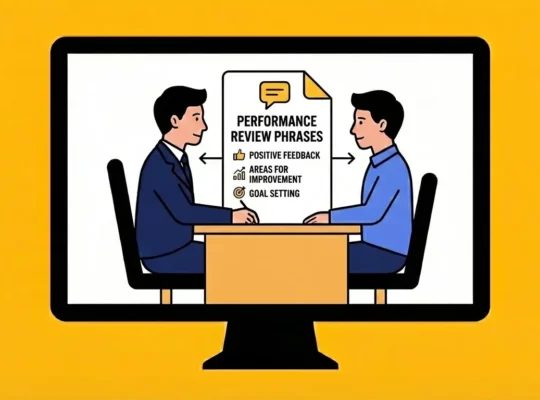The shift to remote work has transformed how we connect with our teams. It has revolutionized the way we work, but it’s also presented new challenges for keeping employees connected and motivated. Employee engagement is crucial for maintaining productivity and morale, especially in a virtual setting. This article will explore practical strategies to foster a thriving remote work culture with the help of specialized tools such as Review.jobs. Whether you’re an HR professional or a company leader, you’ll find valuable insights to help your team thrive in a virtual environment.
- Understanding Remote Employee Engagement
- How Does Remote Work Affect Engagement?
- Why Should Employers Target Remote Employee Engagement?
- 10 Strategies to Engage Remote Employees
- FAQs
I. Understanding Remote Employee Engagement
Definition of Employee Engagement
Employee engagement is more than just showing up to work. It’s about feeling connected to your job, invested in your company’s success, and motivated to contribute your best. Engaged employees are passionate about what they do and feel a sense of purpose in their work.
How is Employee Engagement for Remote Employees Different from Onsite Engagement?
While the concept of engagement remains the same, the way we measure and foster it in a remote setting is different. Without the daily buzz of the office, remote employees can sometimes feel isolated and disconnected from their team and company. This can impact their motivation, job satisfaction, and overall productivity.
II. How Does Remote Work Affect Engagement?
Communication Barriers and Misinterpretations
One of the biggest hurdles to overcome in remote work is effective communication. Without the subtle cues of body language and tone of voice that we rely on in face-to-face interactions, misunderstandings can easily arise. This can lead to frustration, decreased productivity, and a breakdown in teamwork.
Feelings of Isolation and Lack of Community
Remote work can often feel isolating. Without casual office interactions, water cooler chats, or impromptu team lunches, employees may struggle to build strong connections. This sense of isolation can lead to feelings of disengagement, decreased job satisfaction, and even burnout.
Difficulty in Maintaining Work-Life Balance
Remote work often blurs the lines between professional and personal life. Without a clear separation between the office and home, employees can find themselves constantly “on,” leading to feelings of burnout and stress. This blurred boundary can negatively impact both work performance and personal well-being.
Technological Issues and the Digital Divide
The shift to remote work has highlighted the digital divide. Not everyone has equal access to reliable technology and high-speed internet. This disparity can create significant challenges for remote employees. Technical difficulties, from slow internet connections to outdated equipment, can disrupt workflow, hinder communication, and reduce productivity.
III. Why Should Employers Target Remote Employee Engagement?
Engaged employees are a company’s greatest asset. When your team is passionate about their work and invested in the company’s success, it has a ripple effect across the entire organization.
Benefits of High Employee Engagement
Engaged employees are a company’s secret weapon. When your team is passionate about their work and invested in the company’s success, everyone wins.
Here’s how high employee engagement can transform your business:
- Boost Productivity: Engaged employees are more efficient, creative, and focused, leading to higher output and better results.
- Reduce Costs: Lower turnover rates, decreased absenteeism, and fewer errors on the job line all contribute to significant cost savings.
- Strengthen Your Employer Brand: Happy, engaged employees become brand ambassadors, attracting top talent and boosting your company’s reputation.
- Drive Innovation: Engaged employees are more likely to share ideas, take risks, and contribute to new and better ways of doing things.
- Improve Customer Satisfaction: Employees who love their jobs deliver exceptional customer experiences.
Specific Advantages for Remote Teams
Remote work offers a host of benefits that can significantly enhance an organization’s performance and competitiveness.
- Increased Flexibility: Remote work provides employees with greater autonomy over their work schedules, allowing them to balance personal and professional commitments more effectively.* Expanded Talent Pool: By removing geographical constraints, companies can access a wider range of skills and expertise from a global talent pool.
- Cost Savings: Reduced overhead costs for office space, utilities, and equipment can lead to significant financial savings.
- Improved Employee Satisfaction: Remote work often leads to higher job satisfaction due to increased autonomy, flexibility, and the ability to create a productive work environment.
- Enhanced Focus and Productivity: Eliminating distractions associated with the traditional office environment can boost employee focus and productivity.
The Role of Engagement in Company Culture and Brand Reputation
Engaged employees are more than just workers – they’re brand ambassadors who shape your company’s reputation. When your team is passionate about what they do and believes in your company’s mission, it shows.
Here’s how employee engagement impacts your brand:
- Authenticity Shines Through: Engaged employees genuinely care about your brand, and this authenticity resonates with customers.
- Positive Word-of-mouth: Happy employees share their positive experiences, attracting new customers and building trust.
- Crisis Management: During challenging times, engaged employees are more likely to go the extra mile, protecting your brand’s reputation.
- Employer Branding: A strong employer brand attracts top talent, and engaged employees are living proof of your company culture.
IV. 10 Strategies to Engage Remote Employees
1. Foster Regular Communication
Effective communication is the backbone of any successful remote team. Regular check-ins and updates ensure everyone is aligned, informed, and engaged. Here, we explore tools and platforms that facilitate seamless communication among remote employees.
Importance of Frequent Check-ins and Updates
Frequent check-ins and updates are essential in maintaining transparency, building trust, and keeping everyone on the same page. They help in identifying issues early, providing timely feedback, and fostering a sense of belonging among remote workers. Regular communication prevents isolation and ensures that employees feel supported and valued.
Tools and Platforms for Effective Communication
Review.jobs
Review.jobs is a certified platform designed to manage authentic employee reviews. It offers comprehensive solutions to collect, manage, showcase, and analyze employee feedback, which is crucial for understanding company culture and employee sentiment.
Key features include:
- Anonymity and Security: Ensure employee anonymity to encourage honest and open feedback.
- Smart Review Management: Centralized dashboard for managing reviews, tracking sentiment, and responding efficiently.
- Detailed Analytics: Advanced analytics and reporting features to understand trends and drive positive change.
- Showcase Testimonials: Highlight verified employee testimonials on your company profile and career pages.
BambooHR
BambooHR is a comprehensive HR software that integrates various HR functionalities into a single platform, making it ideal for remote employee engagement.
Key features include:
- Employee Data Management: Centralize all employee information, including payroll, time tracking, and benefits, ensuring data accuracy and security.
- Payroll Processing: Automate payroll processes with seamless data flow, comprehensive reporting, and full-service tax filing.
- Employee Self-Service: Empower employees with self-service options for updating personal information, accessing pay stubs, and managing benefits.
Slack
Slack is a leading communication platform that brings all your tools into one place, enhancing productivity and collaboration.
Its features are particularly beneficial for remote teams:
- Flexibility: Options for chatting, sending audio and video clips, or hopping on a huddle for live discussions.
- Integrations: Integrate with numerous apps to streamline workflows and automate routine tasks.
- Security and Scalability: Securely supports collaboration at large organizations, ensuring data protection and scalability.
2. Encourage Collaboration
Building strong connections between remote team members is essential for success. Encouraging collaboration through virtual team-building activities can significantly boost morale and productivity.
Virtual team-building offers a fun and engaging way to strengthen relationships, improve communication, and foster a sense of camaraderie. Activities like online escape rooms, virtual trivia contests, or collaborative problem-solving challenges can help break down silos and create a stronger team dynamic.
3. Invest in Employee Growth
Empowering your employees to reach their full potential is a cornerstone of a thriving remote workforce. You demonstrate your commitment to their growth and career advancement by offering robust professional development opportunities.
Online training programs and webinars provide accessible and flexible learning options. Platforms like Coursera and LinkedIn Learning offer a vast library of courses covering a wide range of topics, from technical skills to leadership development.
4. Recognize and Reward Achievements
Recognizing and rewarding achievements are fundamental to maintaining a motivated and engaged workforce. Implementing a structured recognition program and celebrating milestones can significantly enhance employee satisfaction and retention. Here’s how to create an effective recognition program and an overview of some key tools to help with remote employee recognition.
Creating a Recognition Program
An effective recognition program involves setting clear criteria for recognizing achievements, ensuring fairness, and making the process transparent. It should encompass various types of recognition, including peer-to-peer, manager-to-employee, and team-based recognition. The program should be integrated into the daily workflow to effectively boost workplace culture.
Celebrating Milestones and Successes
Celebrating milestones and successes, whether big or small, reinforces positive behaviors and motivates employees to continue performing well. Regularly acknowledge work anniversaries, project completions, and personal achievements. These celebrations can be done through team meetings, company-wide announcements, or personalized messages.
Top 3 Employee Recognition Software
Nectar
Nectar is an employee recognition software designed to build a positive company culture by recognizing great work, promoting core values, and offering meaningful rewards.
Key features include:
- Shoutouts: Employees and managers can send shoutouts to recognize excellent work.
- Nectar Points: Incentivize recognition with points that can be redeemed for rewards.
- Integrations: Send recognition directly from Slack or Microsoft Teams.
Bonusly
Bonusly is a performance enablement solution that cultivates high-performing cultures through recognition, feedback, and meaningful rewards.
Features include:
- Peer-to-Peer Recognition: Employees can recognize each other’s contributions, fostering a supportive environment.
- Manager Tools: Equip managers with tools and insights to lead high-performing teams.
- Rewards Program: Automate recognition and reward programs to streamline the process.
ThriveSparrow
ThriveSparrow focuses on driving engagement, boosting performance, and celebrating achievements through its comprehensive platform.
Features include:
- Kudos: Celebrate and recognize employees’ excellence with daily shoutouts.
- Engagement Surveys: Capture employee feedback and discover what drives satisfaction.
- 360 Feedback: Get a holistic view of performance through multi-role reviews.
- Integrations: Seamlessly integrate with Slack and Google Workspace to simplify workflows
5. Support Mental and Physical Well-being
Supporting the overall well-being of your remote workforce is essential for creating a positive and productive work environment. By investing in both mental and physical health, you demonstrate your commitment to your employees’ well-being.
- Mental Health Matters: Providing access to mental health resources, such as counseling services or meditation apps, shows your team that you care about their emotional well-being. Offering mental health days can also help employees prioritize their mental health without fear of repercussions.
- Physical Health is Key: Encourage a healthy work-life balance by promoting physical activity. Offering virtual fitness challenges or stipends for home gym equipment can help employees stay active and energized. Wellness apps can also provide valuable resources for tracking fitness goals and managing stress.
6. Create a Strong Company Culture
Cultivating a strong company culture is essential for fostering a sense of belonging among remote employees. By clearly defining and communicating your company’s values and mission, you create a shared purpose that unites your team.
- Sharing Your Story: Regular communication channels, such as newsletters, town hall meetings, and company-wide emails, help keep everyone informed about the company’s direction and goals.
- Building Community: Involving remote employees in company initiatives, like virtual happy hours or team-building activities, creates opportunities for connection and shared experiences. This helps to break down silos and foster a sense of camaraderie.
- Leading by Example: Company leaders play a crucial role in shaping company culture. Demonstrating the desired values and behaviors through actions sets the tone for the entire organization. Leaders should be visible, accessible, and actively involved in building a positive culture.
8. Ensure Flexibility and Autonomy
Empowering your remote workforce is essential for fostering a positive and productive work environment. By offering flexibility and autonomy, you demonstrate trust in your employees and empower them to take ownership of their work.
- Flexible Work Arrangements: Allowing employees to choose their working hours based on their personal preferences and productivity peaks can significantly improve work-life balance and job satisfaction.
- Autonomy and Ownership: Empowering employees to make decisions and take ownership of their projects fosters a sense of responsibility and accomplishment. Trusting your team to manage their workload effectively can lead to increased motivation and job satisfaction.
9. Facilitate Social Connections
Remote work can often lead to feelings of isolation, so it’s essential to create opportunities for social interaction and connection among team members.
- Virtual Social Events: Regular virtual gatherings, such as coffee breaks, happy hours, or team lunches, can help build camaraderie and strengthen relationships.
- Informal Communication Channels: Creating spaces for casual conversation, like dedicated chat channels or virtual watercooler moments, encourages informal interaction and helps employees feel connected.
- Employee Resource Groups (ERGs): Supporting employee resource groups can foster a sense of belonging and community among employees with shared interests or backgrounds.
10. Use Technology to Enhance Engagement
Digital tools can significantly improve remote work efficiency and foster collaboration, ensuring that employees remain connected and productive. Here’s a look at how technology can be utilized and an overview of top remote employee engagement platforms.
Leveraging Digital Tools for Remote Work Efficiency
Digital tools streamline workflows, automate routine tasks, and provide platforms for effective communication and collaboration. By integrating these tools into daily operations, companies can enhance productivity, reduce manual errors, and ensure that all team members are aligned.
Adopting Platforms that Foster Engagement and Collaboration
Adopting the right platforms can create a cohesive and engaging work environment, even when employees are working remotely. These platforms facilitate seamless communication, provide avenues for feedback and recognition, and help boost the company’s performance improvement.
Top 3 Remote Employee Engagement Platforms
monday.com
monday.com is a comprehensive work management platform designed to enhance team collaboration and productivity. Key features include:
- Project Management: Manage tasks, projects, and workflows with customizable boards.
- Team Collaboration: Simplify communication and collaboration with integrated messaging and file sharing.
- Automations: Create custom automations to streamline processes and reduce manual work.
- Integrations: Integrate with various apps to centralize all your tools in one place, enhancing workflow efficiency.
Leapsome
Leapsome is a leading 360-degree feedback software that enhances performance management and employee engagement. Features include:
- Performance Reviews: Conduct impactful performance and 360° reviews that are easy to set up and complete.
- Goal Setting and Tracking: Define and track company-wide or team-specific goals to ensure alignment and progress.
- Continuous Feedback: Facilitate ongoing feedback to support employee development and growth.
- AI-driven Insights: Utilize AI to summarize feedback, track performance trends, and identify high-potential employees.
WorkTango
WorkTango offers a holistic employee experience platform with recognition and rewards, surveys, and insights. Features include:
- Employee Surveys & Insights: Conduct unlimited surveys across the employee lifecycle to measure engagement and gather feedback.
- Recognition & Rewards: Automate recognition and rewards to incentivize desired behaviors and celebrate achievements.
- Integrated Platform: Combine employee recognition, surveys, analytics, and HRIS integrations in one easy-to-use platform.
- Actionable Insights: Provide leaders with robust dashboards and recommended action plans based on survey data.
Engaging remote employees is crucial for maintaining productivity, morale, and a positive company culture. Implementing these strategies will help you create a supportive and engaging environment for your remote team. By leveraging tools and techniques designed for remote work, you can ensure your employees remain motivated and connected, no matter where they are working. At Review.jobs, we understand the challenges of remote employee engagement and are here to support you with the best strategies and tools to keep your team engaged and thriving in a virtual world.
FAQs
- Why is employee engagement important in remote work?
Employee engagement is crucial in remote work because it helps maintain productivity, job satisfaction, and overall morale. Engaged employees are more likely to be motivated, committed to their work, and less likely to leave the company.
- What are the main challenges of remote work?
Remote work presents several challenges, including communication barriers, feelings of isolation, difficulty in maintaining work-life balance, and technological issues. Addressing these challenges is essential for fostering a positive remote work environment.
- How can I foster regular communication with remote employees?
To foster regular communication, schedule frequent check-ins and updates, use reliable communication tools like Slack or Microsoft Teams, and encourage open and transparent communication channels within the team.
- What strategies can promote collaboration among remote teams?
Promote collaboration by organizing virtual team-building activities, using project management tools like Trello or Asana, and encouraging teamwork through collaborative projects and brainstorming sessions.
- How can I support the professional development of remote employees?
Support professional development by offering online training programs, and webinars, and encouraging continuous learning through certifications and courses. Provide opportunities for remote employees to develop new skills and advance their careers.
- What are some effective ways to recognize and reward remote employees?
Effective ways to recognize and reward remote employees include creating a recognition program, celebrating milestones and achievements through virtual ceremonies, and providing tangible rewards like bonuses or gift cards.
- How can I support the mental and physical well-being of remote employees?
Support mental and physical well-being by offering mental health resources such as counseling services, promoting physical health through wellness programs and fitness challenges, and encouraging regular breaks and a healthy work-life balance.
- How can I create a strong company culture with remote employees?
Create a strong company culture by clearly defining and communicating company values and mission, involving remote employees in cultural initiatives, and fostering a sense of community through virtual events and activities.
- What is an employee review management system, and how can it help?
An employee review management system, such as Review.jobs, helps facilitate regular performance reviews, feedback loops, and engagement surveys. It ensures that employees receive constructive feedback and feel valued, which enhances their engagement and performance.
- How can I ensure flexibility and autonomy for remote employees?
Ensure flexibility and autonomy by allowing flexible working hours and environments, trusting employees to manage their schedules, and providing the necessary tools and resources for them to work independently.
- How can I facilitate social connections among remote employees?
Facilitate employee connection by organizing virtual social events like coffee breaks, happy hours, and team-building activities. Encourage informal communication through chat groups and create opportunities for employees to connect on a personal level.
- What technology can enhance remote employee engagement?
Enhance remote employee engagement by leveraging digital tools such as video conferencing platforms, collaboration tools, project management software, and engagement platforms like Review.jobs. These technologies help streamline communication, collaboration, and feedback processes.
- Why should employers focus on remote employee engagement?
Employers should focus on remote employee engagement to increase productivity, reduce turnover, improve job satisfaction, and maintain a positive company culture. Engaged employees are more likely to contribute positively to the organization’s success.
- How can I measure the engagement of remote employees?
Measure engagement by conducting regular surveys, asking the right performance review questions, and organizing feedback sessions. Use metrics such as employee satisfaction scores, productivity levels, and retention rates to gauge the effectiveness of engagement strategies.
- What are the benefits of implementing these engagement strategies?
Implementing these engagement strategies can lead to a more motivated and productive remote workforce, higher employee retention rates, improved job satisfaction, and a stronger company culture. It also helps attract and retain top talent in the remote job market.





